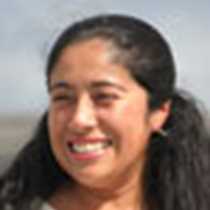We had a long navigation, traveling northbound around the island of Isabela to the western part of the Galapagos archipelago. The cold waters of the equatorial counter-current rise up along the edge of the Galapagos platform, bringing to the surface not only cool sea temperatures but also an extraordinary amount of plankton, creating great conditions for marine wildlife! Not surprisingly, we woke up early this morning with the announcement of whales and dolphins close to the ship, and our Captain John Zurita maneuvered us closer. It was amazing to follow the common dolphins, and to see the largest living mammal on the world—the blue whale. We also caught a glimpse of the elusive ocean sun fish, and the grand finale of our morning was the appearance of a large male Orca, the top predator of the ocean!
What a way to start the day!
After breakfast we headed to Fernandina Island, which is the youngest island in the archipelago. An incredible morning, clear blue sky, an imposing shield volcano, the world’s largest pristine island awaiting us with many delights. The innumerable lava flows were covered with basking marine iguanas, hugging each other and warming up. Our photographer got some excellent photographs—the animals are so tame, they simply ignore us! The Galapagos hawk, the top predator of the Islands, made an appearance as well, and landed on a mangrove tree very close to us. This was an excellent place to take pictures of the Sally light foot crabs, striated herons and baby sea lions. There were several young explorers on the hike that I was guiding, and they named the baby sea lion that we found in the area: “Bob Joe Junior”. We left the place as we found it, taking only memories that will last forever! Once everybody was onboard the National Geographic Endeavour, we pulled the anchor and sailed towards Isabela Island, our course set to Ecuador Volcano, but soon we were distracted once again due to the announcement of whale and dolphin sightings! The blue whales made a second appearance, for any of our explorers that didn’t observe the whales earlier in the morning, and we counted NINE of them!!!
Our scheduled lectures had to be postponed due to the cetacean sightings, however, after a well-deserved lunch, a very interesting workshop was led by one of the members of our natural history staff, Sofia Darquea, who explained how to convert paper into pearls! Her talk and instructions put all the participants into action, and they were cutting paper, rolling it, and converting them into pieces of art, which later on will be handed to the local artisans. On board the National Geographic Endeavour, our guests do not only learn about natural science, but also about conservation in action.
We dropped anchor at the southern end of the caldera of Ecuador Volcano, an area called Punta Vicente Roca. The first activity of the afternoon was snorkeling! The cool waters of this place offer a unique experience, and we encountered sea turtles, sea lions, flightless cormorants, Galapagos penguins and lots of fish! It was very rewarding to hear all the comments from our guests: incredible, unbelievable, amazing, I will do it again! Afterwards we came back to explore the coastline from the Zodiacs, where we were able to get a different perspective of the Galapagos penguin, sea lions, green sea turtles showing their heads, and flightless Cormorants drying the feathers of their tiny wings!
With the last beams of sun, the National Geographic Endeavour moved north crossing the Equator. It was a beautiful sunset, our guests enjoyed a wine tasting to celebrate as we crossed. It was another great day in paradise, and the adventure continues tomorrow…







